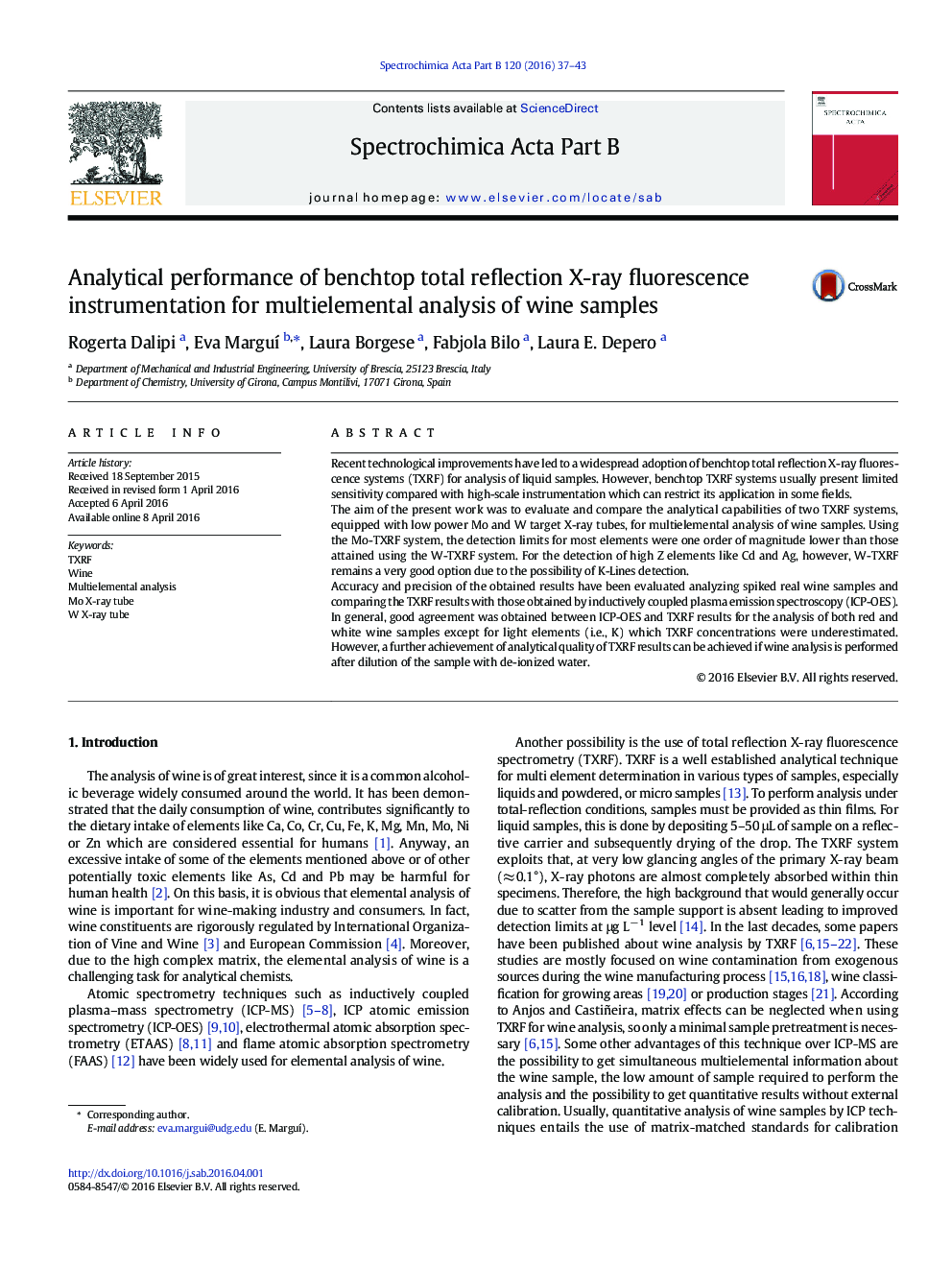| Article ID | Journal | Published Year | Pages | File Type |
|---|---|---|---|---|
| 1239659 | Spectrochimica Acta Part B: Atomic Spectroscopy | 2016 | 7 Pages |
•Comparison of low power Mo and W-TXRF systems for multielemental analysis of wines•Wine samples can be analyzed by depositing 10 μL of the standardized sample using Ga.•Light element recoveries can be improved after wine dilution.•LODs for light-medium Z elements are one order of magnitude lower for Mo-TXRF system.•Better sensitivity for high Z elements (i.e., Cd) is obtained using W-TXRF system.
Recent technological improvements have led to a widespread adoption of benchtop total reflection X-ray fluorescence systems (TXRF) for analysis of liquid samples. However, benchtop TXRF systems usually present limited sensitivity compared with high-scale instrumentation which can restrict its application in some fields.The aim of the present work was to evaluate and compare the analytical capabilities of two TXRF systems, equipped with low power Mo and W target X-ray tubes, for multielemental analysis of wine samples. Using the Mo-TXRF system, the detection limits for most elements were one order of magnitude lower than those attained using the W-TXRF system. For the detection of high Z elements like Cd and Ag, however, W-TXRF remains a very good option due to the possibility of K-Lines detection.Accuracy and precision of the obtained results have been evaluated analyzing spiked real wine samples and comparing the TXRF results with those obtained by inductively coupled plasma emission spectroscopy (ICP-OES). In general, good agreement was obtained between ICP-OES and TXRF results for the analysis of both red and white wine samples except for light elements (i.e., K) which TXRF concentrations were underestimated. However, a further achievement of analytical quality of TXRF results can be achieved if wine analysis is performed after dilution of the sample with de-ionized water.
